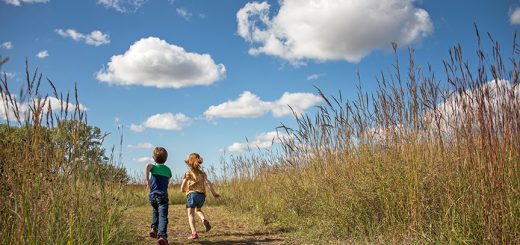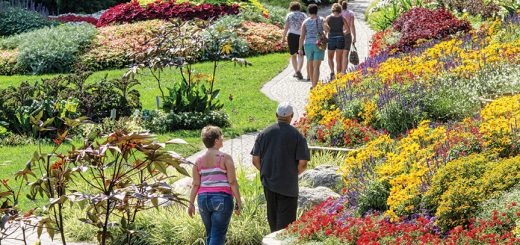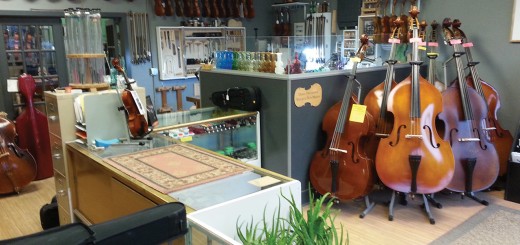Lincoln’s Public Art

by Sriyani Tidball
For decades both public and private funding have added to Lincoln’s impressive display of public art. Lincoln’s cultural scene is evident in its museums, galleries, and outdoor art installations. Each venue and public display defines Lincoln’s profile of character, beauty and creativity.
There are colorful murals and towering sculptures scattered throughout parks and plazas making Lincoln’s commitment to the arts clear. Artistic expression enhances the city’s sense of community and cultural identity. Lincoln is a special destination for those who appreciate artistic experiences. The city’s dedication to cultivating art makes it a remarkable place for both locals and visitors alike.
The University of Nebraska-Lincoln boasts a remarkable collection of public art, making it an enjoyable and culturally enriching place to stroll. Situated on campus at 12th and R streets, the Sheldon Sculpture Garden, showcases 30 distinctive sculptures ranging from the early 20th century to the present. Originally dedicated in 1970, the garden covered 2.5 acres, but its influence extends across the entire campus, with outstanding modern sculptures. World-class works by renowned international artists inspire UNL students, staff, and visitors alike. Among the most celebrated pieces is Floating Figure by Gaston Lachaise, a masterpiece that captivates.
In 2004, the Friends of the Center for Great Plains Studies at the University of Nebraska-Lincoln commissioned sculptor George Lundeen to create a multi-figure bronze sculpture titled On the Trail of Discovery, commemorating Lewis and Clark’s historic expedition. The explorers are accompanied by their Native American guide Sacagawea, a young boy, and the expedition’s Newfoundland dog. A tribute to a pivotal moment in American history, this sculpture welcomes visitors to UNL’s Center for Great Plains Studies.
Eddie Dominguez, a professor of art at UNL, conceived Redwall, a striking installation composed of 383 ceramic tiles spanning an entire wall in the Lied Center for Performing Arts’ Lied Commons. It is a reflection of the local community. Rather than the vision of a single artist, the tiles, crafted by anonymous contributors, depict a variety of subjects from flowers to footballs, celebrating collective spirit of the community.
Some of the most popular sculptures on the UNL campus include Torn Notebook by Claes Oldenburg and Coosje van Bruggen, Old Glory by Mark di Suvero, and Greenpoint by Richard Serra. For a map of these and other sculptures, as well as more information, visit sheldonartmuseum.org. Other notable works on campus include David Smith’s Superstructure Four, an impressive stainless-steel piece; Tony Smith’s Willy and Prismatic Flake, located near the Alumni Building on R Street; and Variable Wedge, an abstract sculpture near the Westbrook Music Building. These are just a few of the many sculptures that enhance the UNL campus.
Lincoln’s downtown and Haymarket are rich with art. One standout is Harvest, a dazzling 45-foot-tall metal sculpture with its ever-changing colors in the plaza in front of Pinnacle Bank Arena. Designed by Oregon artist Ed Carpenter, this abstract piece is illuminated both inside and out, creating a luminous presence day and night. Harvest resembles a sheaf of wheat or a fountain, and its dichroic glass reacts to light in a marvelously mercurial way, changing colors from every angle.
Another striking piece, Ascent, is located in Tower Square at 13th and P Streets. This large glass spire, created by internationally renowned Japanese sculptor and Omaha resident Jun Kaneko, lights up at night like a magical tower of color. The five-story, 57-foot-tall sculpture is surrounded by sand gardens and concrete concentric circles. It was fabricated in Germany and installed by German steel and glass workers at a cost of $1.15 million. Ascent has become a landmark in the heart of downtown Lincoln.
A local favorite is Watchful Citizen, a bronze sculpture of a man sitting on a bench with plenty of room for a passer-by to join him. Located in Lincoln’s Haymarket near Lincoln Station (7th and Q Streets), it’s a popular spot for photo opportunities. And just a block away, you’ll find the Iron Horse Legacy, a stunning brick mural by Lincoln native artist Jay Tschetter, also at Lincoln Station.
Downtown Lincoln also features a striking 15-foot-tall photomural by local artist Larry Roots, spanning the skywalk above S. 12th Street between O and N streets. It showcases individuals of various ages, genders, and ethnicities, celebrating the city’s diversity. Nearby, in Union Plaza Park, you’ll find Groundwater Colossus, a remarkable giant brick head created by New York City sculptor James Tyler. Comprising over 300 individually shaped bricks stacked in concentric circles, this 10-ton red clay masterpiece stands prominently in the middle block of Union Plaza, between P and Q streets.
Centennial Mall features two remarkable bronze sculptures at either end. As part of the $9.6 million redesign of Lincoln’s Centennial Mall, sculptor Ben Victor created a stunning 11-foot bronze statue of Chief Standing Bear, the Ponca leader whose 1879 trial established that Native Americans are “persons within the meaning of the law.” Victor was inspired by Daniel Chester French’s Standing Lincoln near the State Capitol. In 2021, Victor installed a second masterpiece on the opposite end of the mall — a bronze sculpture of Dr. Susan La Flesche Picotte, the trailblazing Nebraska Native American physician. This sculpture is located next to the Scottish Rite Temple, across from the State Office Building between L and M Streets. While visiting Centennial Mall, take the opportunity to explore the State Capitol and admire the incredible art within this architectural monument.
Pioneers Park in southwest Lincoln offers a unique blend of art and nature, with numerous sculptures nestled within its 668 acres of tallgrass prairie, woodlands, wetlands, and streams. Explore the park’s eight miles of hiking trails, winding through diverse habitats and incredible art along the way. One of the most beloved pieces is Smoke Signal by Ellis Burman. It was installed 80 years ago as a memorial to Nebraska’s Native American tribes. The sculpture was dedicated in 1935 during a ceremony attended by over 100 Native Americans, including chiefs from the Omaha, Winnebago, Sioux, and Ponca tribes, who, in full regalia, sat atop the hillside facing the setting sun. Another notable sculpture is Mountain Monarch by Rich Haines, standing at the park’s north entrance off West Van Dorn Street. This piece is one of two sculptures in Pioneers Park that rank among the top 10 most valuable public artworks in Lincoln.
Northeast Lincoln around The LUX Center for the Arts at 48th Street and Baldwin Avenue fosters creativity both inside and outside its walls with an array of vibrant murals, making it a hub for artistic expression. These murals were brought to life during the biennial EmergeLNK street art festival and have since become one of the city’s most beloved attractions.
Not far from here, near Nebraska Wesleyan University’s fine arts building, stands Calling Away, an impressive sculpture made of blue welded steel. Created in 1950 by sculptor Dan Peragine, it symbolizes the unification of the fine arts: art, music, and theatre.
Another significant piece in Lincoln’s artistic landscape is Ellis L. Burman’s Pioneer Woman, a bronze sculpture that honors the pioneer women of Nebraska. It can be found in the Memory Garden at 33rd and Melrose.
The Bicentennial Cascade Fountain, a concrete water feature, sits near one of Lincoln’s busiest intersections at South 27th Street and Capitol Parkway. Created by artist Larry B. Group, the fountain serves as a tribute to teachers and their lasting impact on the youth of Nebraska.
Nearby in the Sunken Gardens,one of Lincoln’s most popular attractions, you’ll find Reveille, a
cast metal sculpture by Dr. Wayne Southwick. This piece, depicting an angel blowing a trumpet, was inspired by the artist’s wife as she woke their children each morning.
Another notable sculpture in the Sunken Gardens
is a beautiful bronze of a young girl with a
sketchbook, created in memory of the late Beatrice ‘Mike’ Seacrest.
In 2003, the Lincoln Arts Council launched what is considered Lincoln’s first major public art initiative. The Tour de Lincoln was designed to highlight the city’s 85-mile trail system and featured 71 uniquely decorated bicycle sculptures scattered across parks, businesses, private residences, and bike trails. In October 2003, these bicycles were auctioned to raise funds, although many remain in their original locations as permanent displays.
The following notable public art project occurred in 2006 with 69 star-themed artworks displayed throughout Lincoln, benefiting the Lincoln YWCA. This was succeeded by the Nebraska Heart public art project in 2017, which showcased 89 heart sculptures on Haymarket Park’s covered concourse, culminating in an auction.
Most recently, in 2018, the Serving Hands project introduced 39 different pieces of art around the city, celebrating the 50th anniversary of Campus Life.
These projects are just a glimpse of Lincoln’s vibrant public art scene. For more information about the art that enhances the city, be sure to explore
the Art Gallery story. Lincoln is truly a city rich in artistic expression.
For exact location of these amazing pieces of art and more check: www.lincoln.ne.gov/City/Departments/Parks-and-Recreation/Parks-Facilities/Public-Art.














Recent Comments